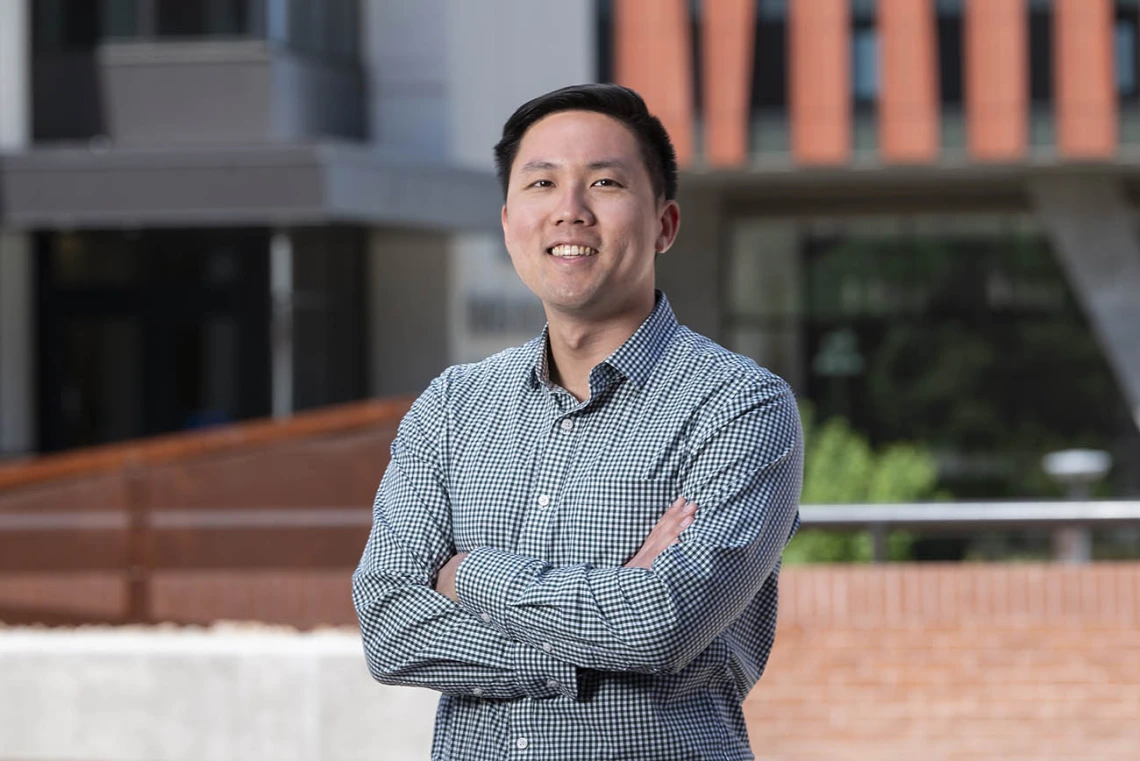College of Medicine – Tucson researchers tackle immune rejection of biomedical implants
Biomedical implants, such as breast implants and pacemakers, improve patient health and quality of life but may be rejected as foreign bodies. Suppressing production of an immune protein could reduce this risk.

To learn more about what causes the body to reject biomedical implants, a team at the University of Arizona College of Medicine – Tucson identified a protein that appears to help drive this response and hopes their discoveries will improve the design and safety of biomedical implants. The findings were published today in Nature Biomedical Engineering.

Geoffrey Gurtner, MD, is a professor and head of the Department of Surgery in the UArizona College of Medicine – Tucson and a member of the UArizona Cancer Center.
Biomedical implants, such as breast implants, pacemakers and orthopedic hardware, have transformed medicine, but a significant number are rejected by the body and need to be removed. The culprit is a little-understood immune reaction called foreign body response, or FBR, in which the body encapsulates the implant in scar tissue.
Senior author Geoffrey Gurtner, MD, FACS, department chair of surgery, and co-lead author Kellen Chen, PhD, assistant research professor of surgery, say their proposed approach is a departure from the conventional thought process for tackling implant failure, which thus far has relied on using so-called biocompatible materials that are better tolerated by the body but don’t completely remove the risk of FBR.
“Establishing a complete understanding of the molecular mechanisms driving the foreign body response presents the final frontier in developing truly bio-integrative medical devices,” Gurtner said.
The causes of FBR are relatively unknown. Chen said the prevailing hypothesis is that FBR is a reaction to the chemical composition of the implant. In contrast, this study demonstrates that the implant introduces stress points to the body, triggering an overactive immune response.
“The cells touch this new material similar to if I touch something soft versus something hard. My body can tell that a table is harder than a pillow — touching the table activates mechanical pathways in my fingers. Similarly, as the cells interact with that implant and surrounding tissue, they activate due to the increased mechanical stress,” Chen said. “The immune cells realize there is a foreign body there, and they react by building a fibrotic capsule that surrounds the implant in an attempt to shield it off.”
The more severe the immune reaction, the thicker the capsule. In some people, this capsule constricts around the implant, impeding its function and causing pain. Up to 30% of implants need to be removed due to FBR.

Kellen Chen, PhD, is an assistant research professor of surgery in the UArizona College of Medicine – Tucson and a member of the UArizona Cancer Center.
To understand why some immune systems build thick capsules around implants while others do not, the team gathered capsule samples from 20 patients whose breast implants were removed — 10 whose reactions were severe, and 10 whose reactions were mild. A protein called RAC2 was highly expressed in samples taken from patients with severe reactions.
“When we examined the severe fibrotic samples, RAC2 was one of the most important proteins we found,” Chen said. “Because it seemed to drive a lot of downstream pathways, we decided to explore a little more closely.”
In reaction to mechanical stress caused by the implants, immune cells activate RAC2 and other proteins, which summon additional immune cells, including types that can combine to attack a large invader.
“That foreign body, which is very stiff and causes stress on the external environment, activates these immune cells to aggregate to that area,” Chen said. “They start merging with each other, making massive cells that spit out fibrous proteins like collagen and other products.”
To confirm RAC2’s role in FBR, the team blocked the expression of RAC2 in animal models.
“We targeted RAC2 along with other pathways and observed a significant reduction in the level of FBR — up to three-fold,” said Dharshan Sivaraj, research fellow in the Department of Surgery and co-lead author of the study. “We think targeting these pathways could serve as a potential therapy to mitigate or even prevent clinically significant FBR in humans.”
RAC2 is specific to immune cells, which means that, theoretically, a drug blocking it might only target immune cells without affecting other cells in the body. Gurtner and Chen, who are also members of the UArizona Cancer Center, say the next step is to create a more specific version of this drug ready for human use, and their team is already working with the Arizona Center for Drug Discovery at the R. Ken Coit College of Pharmacy to develop it.
“We believe that local targeted therapy is better. Maybe there are ways to conjugate this drug onto an implant with some sort of coating to minimize systemic problems,” Gurtner said.
Tech Launch Arizona, the University of Arizona’s technology commercialization office, is working with the team to translate the innovation from the laboratory to the marketplace, where they hope it will have real-world impact for patients and their health care providers.
The Gurtner Lab conducted this study in collaboration with teams at Stanford University School of Medicine, the University of Texas Southwestern Medical Center, and University Hospital Regensburg in Germany. Other College of Medicine – Tucson Department of Surgery authors included Hudson C. Kussie, research professional; Katharina Fischer, MD, postdoctoral fellow; and Artem A. Trotsyuk, PhD, assistant research professor.
Contact
Anna Christensen
UArizona College of Medicine – Tucson
520-626-9964
achristensen@arizona.edu

